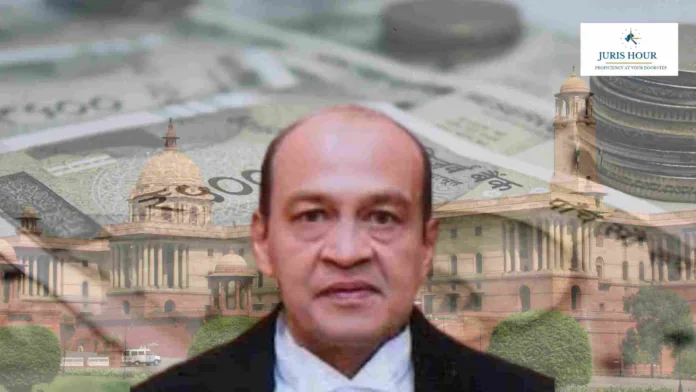The Supreme Court has upheld the constitutional validity of the In-House Procedure for examining allegations of misconduct against judges of the higher judiciary, dismissing a petition filed by a sitting High Court judge challenging key provisions of the mechanism.
A Bench led by Justice Dipankar Datta delivered the ruling in a writ petition filed under Article 32 by an Allahabad High Court judge (formerly of the Delhi High Court). The petitioner sought to strike down paragraphs 5(b) and 7(ii) of the In-House Procedure, which empower a committee of judges to opine whether misconduct warrants removal proceedings and require the Chief Justice of India (CJI) to forward such findings to the President and Prime Minister.
The controversy arose after a fire at the petitioner’s official residence in Delhi led to the discovery of burnt currency notes in a store-room. The judge denied any connection to the money, alleging it had been planted. Acting under the In-House Procedure framed in 1999, the CJI constituted a three-member committee to probe the matter. The committee’s May 3, 2025 report found serious misconduct and recommended action warranting removal proceedings.
The CJI then wrote to the President and Prime Minister, prompting the judge to move the Supreme Court, claiming the process was unconstitutional, ultra vires Articles 124 and 218, and violative of fundamental rights under Articles 14 and 21.
Senior advocate Kapil Sibal, appearing for the petitioner, argued that removal of judges is governed exclusively by the constitutional process under Articles 124(4)-(5) and 218, read with the Judges (Inquiry) Act, 1968. The In-House Procedure is not a constitutional or statutory mechanism and cannot trigger removal proceedings. The process lacks safeguards such as formal charges, cross-examination, and rules of evidence, rendering it arbitrary and violative of Article 14. Public release of photographs and videos related to the fire incident before a formal removal process began amounted to a breach of the petitioner’s right to reputation under Article 21.
The Court rejected these arguments, holding that the In-House Procedure fills a “yawning gap” in the constitutional scheme by providing an internal, fact-finding mechanism to deal with misconduct short of removal, as recognised in C. Ravichandran Iyer v. Justice A.M. Bhattacharjee (1995).
The court noted that the procedure has “full legal sanction” under Article 141 of the Constitution, being based on binding judicial precedent and adopted by the Supreme Court’s Full Court resolution of 1999. The Judges (Protection) Act, 1985, particularly Section 3(2), preserves the Supreme Court’s authority to initiate such proceedings.
The court held that forwarding the committee’s report to the President and Prime Minister is part of explaining the withdrawal of judicial work from a judge, not a directive to remove him. Concerns that the CJI’s views might influence MPs are unfounded, as the removal process under the Judges (Inquiry) Act is independent and rigorous.
The Court also observed that the petitioner had participated in the In-House inquiry without objecting at the earliest opportunity and could not later challenge its fairness.
Case Details
Case Title: XXX Versus UOI
Case No.: Writ Petition (Civil) No. 699 Of 2025
Date: 07/08/2025
Read More: Supreme Court Quashes Gender-Based Reservation in Army JAG Recruitment, Orders Unified Merit List

